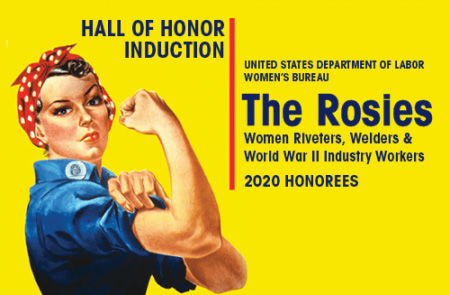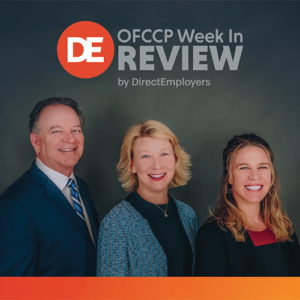 The DE OFCCP Week in Review (WIR) is a simple, fast and direct summary of relevant happenings in the OFCCP regulatory environment, authored by experts John C. Fox, Candee Chambers and Jennifer Polcer. In today’s edition, they discuss:
The DE OFCCP Week in Review (WIR) is a simple, fast and direct summary of relevant happenings in the OFCCP regulatory environment, authored by experts John C. Fox, Candee Chambers and Jennifer Polcer. In today’s edition, they discuss:
- Turmoil Again Grips Joint Employer Business Relationships as a Federal Court Strikes Down Most of USDOL’s Final Joint Employer Rule
- EEOC Updated its COVID-19 Technical Guide
- Accommodation Strategies During COVID-19
- Reminder – Comments on Paid Leave Due By Sept 14th
- USDOL Inducts the “Rosies” into the Hall of Honor
- WHD to Revise Paid Leave Requirements Under FFCRA
- JAN 2021 Monthly Webinar Series Released
- What is the Future of Autism Hiring Programs?
- Updates From the Michigan Industry Liaison Group
- OFCCP’s Latest Audit List Has Many New Twists!
- OFCCP is Now Seeking Comments On The Controversial AAP Verification Process It Envisions!
Tuesday, September 8, 2020: Turmoil Again Grips Joint Employer Business Relationships as a Federal Court Strikes Down Most of USDOL’s Final Joint Employer Rule
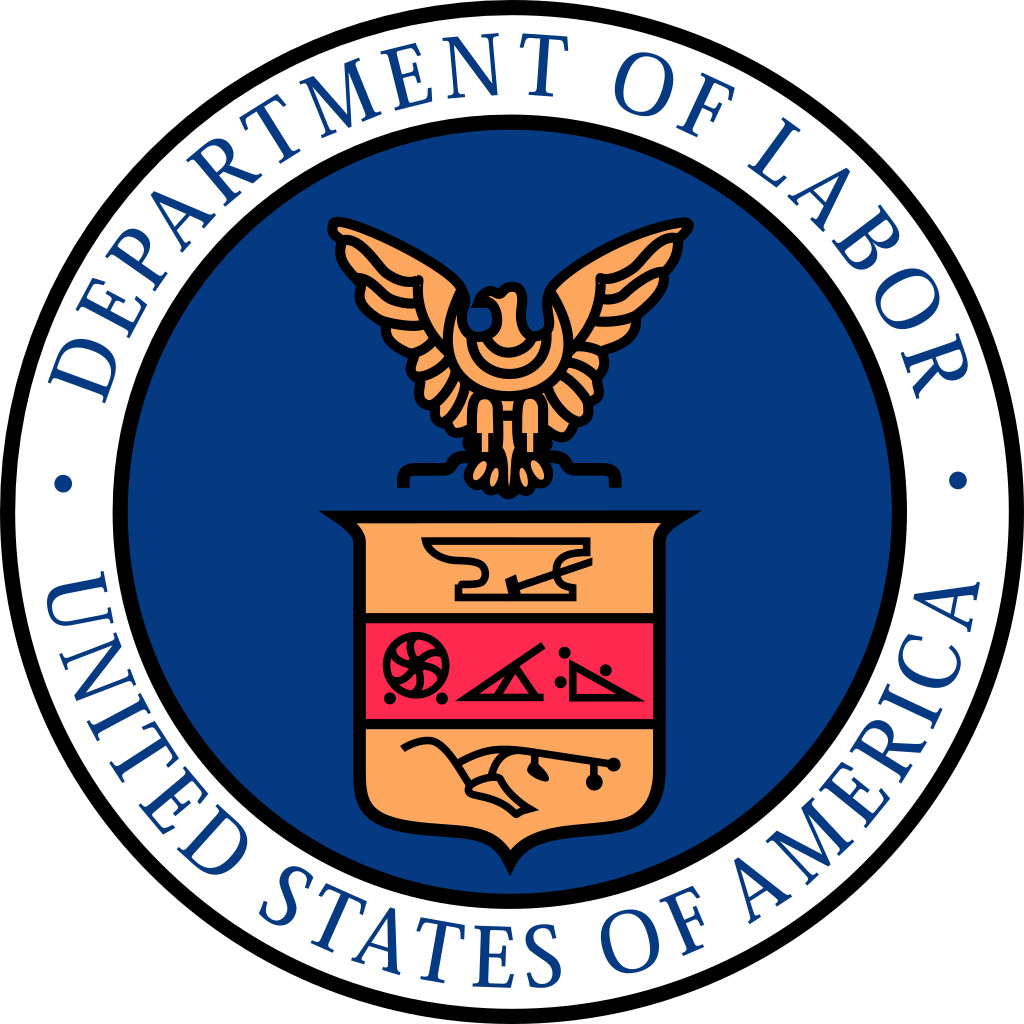
EDITOR’S NOTE: This case decision not only decides a specific point of law, but also provides two important teaching points about current litigation against federal government Final Rules. This is the first teaching point: This is the new style of political litigation: Democrat and Republican Governors and Attorney Generals are banding together to use state taxpayer monies to file lawsuits challenging federal government actions. Should the White House flip political parties January 20, 2021, watch Democratic Governors and Attorney Generals get on the political litigation playing field to attack federal agency Final Rules seeking to reverse Republican White House policies or new polices seeking to expand federal agency authority.
What This Decision Means to Joint Employers
By granting in part the Motion for Summary Judgment, Judge Gregory H. Woods stopped USDOL’s Final Rule defining what constitutes a “vertical joint employer relationship” (the issue at the heart of the Final Rule: see below), under the Fair Labor Standards Act (“FLSA”) from going into effect. USDOL’s Wage-Hour Division announced its Final Rule on January 12, 2020, which we previously summarized.
This decision means that employers engaging in a “vertical joint employer” relationship (specifically franchise businesses or businesses using a subcontractor or staffing agency) must now continue to operate under the Obama Administration’s Rules related to joint employer determinations under the FLSA. An appeal is likely but will take more than a year. That timeline is further burdened by the fact that there are procedural hurdles to appeal what is currently only a partial disposition of the Plaintiffs’ challenge in Judge Woods’ courtroom to the Trump Administration’s Final Rule.
The Nitty-Gritty
Judge Woods held that the Final Rule violated the Administrative Procedure Act (“APA”) in two different ways. First, Judge Woods determined that the vertical joint employer test the Final Rule adopted conflicted with the statutory language of the FLSA and “ignores the statute’s broad definitions.” In issuing its Final Rule, USDOL had stated that the FLSA’s definition of “employer” in section 3(d) was the “sole textual basis” for joint employer liability in the statute. However, Judge Woods reasoned that focusing on the definition of “employer” ignored the expansive definition of the word “employ” in section 3(g) of the FLSA. That definition sweeps within its reach those employees the employer permits “to suffer or permit to work.” Judge Woods also seized on the FLSA’s broad definition of the term “employee” and concluded that neither the term “employ” or “employee” could successfully be untethered from the FLSA’s definition of the term “employer.” Rather, Judge Woods read all three definitions together to define the Congress’ intent as to joint employers.
Furthermore, Judge Woods also rejected USDOL’s argument that section 3(g) of the FLSA was irrelevant to a vertical joint employer analysis. Rather, Judge Woods concluded that USDOL’s reasoning defied the statutory intent of the FLSA. Instead, the Court read section 3(g) as suggesting that Congress specifically intended to expand joint employer liability. Moreover, Judge Woods found that USDOL’s reliance in the Final Rule on “control” as the basis to determine the existence of a joint employer relationship relied on the common law definition of the term “employer.” However, Judge Woods also concluded that Congress clearly rejected the common-law definition of the term “employer” and adopted a more expansive definition when passing the FLSA into law.
Second, Judge Woods concluded for three distinct reasons that the Final Rule was both “arbitrary and capricious” in violation of the standard required of an administrative agency when issuing an interpretive rule:
- USDOL’s reasoning in adopting the Final Rule “failed to adequately justify its departure from its [the USDOL’s] prior interpretations.” The Court noted that federal agencies are free to change their existing policies so long as they provide a reasoned explanation for the change. However, Judge Woods concluded that USDOL’s Final Rule changed the definition of who is an “employer” subject to the FLSA in a way which contradicted the statute’s broad definitions of the terms “employ” and “employee” and failed to provide the necessary explanation for that change.
Additionally, Judge Woods was clearly miffed that USDOL failed to even acknowledge the Obama Administration’s relatively recently issued Rule on joint employer status. The Court noted that USDOL made at best only a passing reference to the prior Rule and then only when acknowledging and refuting in USDOL’s Final Rule a public comment related to the existence of the earlier Obama Final Rule. Judge Wood then concluded that USDOL had failed to satisfy its obligation to explain the Department’s decision to interpret the FLSA differently than its prior interpretation when issuing a new interpretive rule;
- the new standard USDOL set in its Final Rule created a conflict in determining joint employer liability. Judge Woods concluded that USDOL was attempting in its Final FLSA Rule to apply different standards than USDOL applied under its Rules related to the Migrant and Seasonal Agricultural Workers Protection Act, which USDOL also enforces. Judge Woods concluded that the two statutes should be read as having the same intent as to joint employer status and should therefore have the same definitions; and
- the Final Rule did not address concerns related to the costs associated with implementing the Final Rule, as is required by law whenever an administrative agency issues an interpretive rule.
EDITOR’S NOTE: This is the second teaching point. Federal courts striking down Trump Administration Rules quickly reversing recently issued final Obama Administration Rules are now resorting to a common playbook: the new Rule inadequately explained the rationale for reversing a so-recently published Obama Final Rule with content 180 degrees opposite to the new Trump Rule now under legal challenge. For example, federal contractors just saw another federal court apply this same rationale with regard to the EEO-1 Component 2 hours worked and pay data reporting litigation. The Courts are asking what changed since the Obama Administration to warrant the change in policy direction other than that there was an election…since all federal agency Final Rules are supposed to be grounded in and implementing the will of Congress in enacting the statute under which the at-issue federal agency has drafted the at-issue Final Rule?
Each Presidential Administration trying to change the prior Administration’s Final Rules has to put forward a compelling trial record to support the need for the change and to demonstrate how the new Rule properly implements the Congressional intent which led to passage of the statute. That quantum of proof has to be MORE than the good policy reasons which leads a federal agency to issue a Rule pursuant to a statute where there is no existing Final Rule already “on the books.”
What’s Next?
Apart from a difficult appeal, one could reasonably expect that if there is a change of Administration next January 20, 2021, that any new Democrat Secretary of Labor might attempt to withdraw any appeal the Trump USDOL might file of Judge Woods’ decision (especially since this is politically inspired litigation brought by Democrat Governors on behalf of the national unions). The election stakes just increased, at least in the minds of franchisors and staffing agencies…and unions.
Tuesday, September 8, 2020: EEOC Updated its COVID-19 Technical Guide

Updates
There are 18 “new” Q&As (dated 9/8/20) from two other EEOC technical assistance resources (“Pandemic Preparedness in the Workplace and the Americans with Disabilities Act” and a March 27, 2020 EEOC webinar). In addition, two existing Q&As have been updated for further clarification. These are:
- A.6. May an employer administer a COVID-19 test (a test to detect the presence of the COVID-19 virus) when evaluating an employee’s initial or continued presence in the workplace?This question was updated to address stakeholder questions about updates to CDC guidance. As such, the EEOC more fully explains its existing position about employers administering COVID-19 tests before permitting employees to enter the workplace.
- D.8. May an employer invite employees now to ask for reasonable accommodations they may need in the future when they are permitted to return to the workplace? This question was updated to address stakeholder questions. As such, the EEOC clarifies its existing position on employers’ authority to invite employees not currently in the workplace to request disability accommodation in advance of their expected return if they choose to do so.
Wednesday, September 9, 2020: Accommodation Strategies During COVID-19

Accommodation Resources
- JAN blog on “Accommodation Strategies for Returning to Work During the COVID-19 Pandemic,” as covered in the 8/16/20 WIR.
- How to “Increase Disability Inclusion with Centralized Accommodation Programs,” released in October 2019.
- A Checklist for Employers to Facilitate Hiring of People with Disabilities through eRecruiting, as covered in the 08/24/20 WIR.
- Employer COVID-19 success stories from CVSHealth, EY, and Merck (all DE Members!)
Wednesday, September 9, 2020: Reminder – Comments on Paid Leave Due By Sept 14th

See our earlier report for full details and note that written comments are due on September 14, 2020.
Thursday, September 10, 2020: USDOL Inducts the “Rosies” into the Hall of Honor
The U.S. Department of Labor released a video of the Hall of Honor induction ceremony for “The Rosies – Women Riveters, Welders & World War II Industry Workers.”
In 1942, just as World War II was beginning for the Americans, Westinghouse Electric & Manufacturing Company commissioned Pittsburgh artist J. Howard Miller to create the original Rosie the Riveter “We Can Do It!” work poster. The Company’s aim was to increase morale among its factory workers. Norman Rockwell in1943 then immortalized the poster on the front cover of the Saturday Evening Post magazine. Quickly forgotten after WWII, it took almost 40 years before the women’s movement re-discovered the Rosie “We Can Do It!” poster and brought it out of retirement. Rosie soon became one of the most famous icons of WWII and for the last 40 years has been an enduring symbol of the accomplishment, determination and independence of working women.
American women entered the workforce in unprecedented numbers during WWII, as widespread male enlistment in the armed services left gaping holes in the civilian industrial labor force. Between 1940 and 1945, the female percentage of the U.S. workforce increased from 27 percent to nearly 37 percent, and by 1945 nearly one out of every four married women worked outside the home. (History.com)
The true identity of Rosie the Riveter has been the subject of considerable debate. Several extraordinary “Rosies” served the war effort during their late teens, 20s, 30s, and 40s. It is estimated that between 5 and 7 million women held war industry jobs during World War II, increasing the female workforce to about 19 million. Rosalind Walter from Long Island, New York, is thought to be the inspiration for the famous song by Evans and Loeb. She was, in fact, a riveter on Corsair fighter planes.
“For 100 years, the Women’s Bureau has been working on behalf of working women, and the Rosies are the embodiment of that work and deserve this honor,” said Women’s Bureau Director Laurie Todd-Smith. “Through their commitment and achievement, these women set examples for future generations that women could succeed in every industry.” To learn more about the Women’s Bureau and their 100th Anniversary celebration, visit their webpage.
USDOL established its Hall of Honor in 1988 to honor Americans whose distinctive contributions have elevated working conditions, wages, and the overall quality of life for American families.
Friday, September 11, 2020: WHD to Revise Paid Leave Requirements Under FFCRA
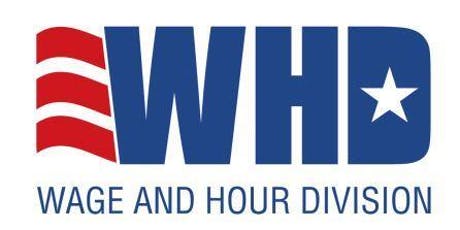
The coming regulatory revisions will reportedly clarify workers’ rights and employers’ responsibilities under FFCRA’s paid leave provisions. WHD’s revisions respond to the August 3, 2020 decision of the U.S. District Court for the Southern District of New York which invalidated portions of the Final Rule.
The revisions will reportedly:
- reaffirm and provide additional explanation for the requirement that employees may take FFCRA leave only if work would otherwise be available to them; and
- reaffirm and provide additional explanation for the requirement that an employee have employer approval to take FFCRA leave intermittently; and
- revise the definition of “healthcare provider” to include only employees who meet the definition of that term under the Family and Medical Leave Act regulations or who are employed to provide diagnostic services, preventative services, treatment services, or other services that are integrated with and necessary to the provision of patient care which, if not provided, would adversely impact patient care; and
- clarify that employees must provide required documentation supporting their need for FFCRA leave to their employers as soon as practicable; and
- correct an inconsistency regarding when employees must provide notice to their employers of a need to take expanded family and medical leave.
“As the economy continues to rebound, more businesses return to full capacity, and schools reopen, the need for clarity regarding the Families First Coronavirus Response Act paid leave provisions may be greater than ever,” said Wage and Hour Administrator Cheryl Stanton. “Today’s updates respond to this evolving situation and address some of the challenges the American workforce faces. Our continuing robust response to this pandemic balances support for workers and employers alike, and remains our priority.”
The Department issued its initial temporary rule implementing provisions under the FFCRA on April 1, 2020.
Friday, September 11, 2020: JAN 2021 Monthly Webinar Series Released

- The Top Ten Veteran-Related Accommodation Questions and Answers
- Ergonomics for Teleworkers
- Accommodations for Respiratory Impairments
- ADA and Accommodation Lessons Learned: COVID-19 Edition
- Q&A with the Cog/Psych Team: Challenging Mental Health Scenarios
And many more! Registration is required, and space is limited, so reserve your seat now!
Friday, September 11, 2020: What is the Future of Autism Hiring Programs?

Check out the most recent podcast releases:
- “What is the Future of Autism Hiring Programs?” In this episode, Haley Moss, lawyer, author, and co-host of the Spectrumly Speaking podcast series, discusses the future of autism hiring programs and their impact on the recruitment and retention of neurodiverse employees in the workplace.
- “What Department Should Oversee Accessibility at Your Company?” In this episode, Pina D’Intino, organizational accessibility specialist, and Jessica Miller-Merrell, founder of Workology.com, discuss the oversight of workplace technology accessibility and accommodations for job applicants and employees with disabilities.
Friday, September 11, 2020: Updates From the Michigan Industry Liaison Group
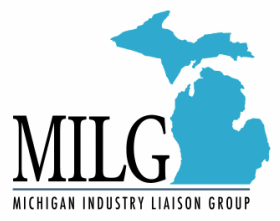
National Industry Liaison Group (NILG) updates:
- The 2020 NILG virtual conference webinar series is complete! Did you miss any of the 26 sessions? Not to worry, you can view all but the very last webinar (transcript to be uploaded soon) at the NILG “completed webinars” link.
- Next years’ event will be in Nashville, TN. With continued pandemic concerns, the group is considering a hybrid approach of both in-person and webinars, so register now! The Thursday night event will be at the Country Music Hall of Fame – so plan to bring your boots and cowboy hats!
OFCCP updates from the Detroit Office:
- Current staffing levels are nine at the Detroit District Office, eight at the Columbus, OH Area Office, and 16 at the Chicago District Office.
- The Agency continues to work 100% remotely and is still scheduling audits. As a reminder, the Agency is giving an automatic 30-day extension to contractors to submit requested Affirmative Action Plans (AAPs) and an additional 30-day extension (if requested) of the information OFCCP requests in its Itemized Listing attached to the OFCCP audit Scheduling Letter.
The Agency has completed several virtual on-site Section 503 Focused Reviews for those organizations that are back in their place of work. In this case, “virtual” includes walking around the organization with a laptop camera for the Compliance Officer to view. In some cases, companies have provided photos showing the required notices and pictures of the bathrooms (looking for accessibility).
Friday, September 11, 2020: OFCCP’s Latest Audit List Has Many New Twists!

Major Changes (revealed in a separate Supply and Service Methodology memorandum)
OFCCP has changed several critical triggers in its audit selection methodology:
- Ushering in a new era of remote audits, OFCCP District Offices (DOs) anywhere in that DO’s region or anywhere in the country could audit a contractor and not necessarily the OFCCP DO closest to the contractor’s physical location, as described below;
- No longer can it be said that OFCCP selects audits by AAP Establishment. OFCCP’s new audit methodology expands the definition of the term “establishment” for audit selection purposes (not for AAP development purposes, of course: that would have to proceed by formal OFCCP Rulemaking) as to Universities and as to Supply and Service “AAP Establishments” collocated at the same address. Universities/colleges with separate AAP Establishments in the same city will now all be part of the same audit, but with several exceptions noted below. As to Supply & Service contractors, OFCCP will audit all AAP establishments collocated at the same address and not just one of the collocated, but functionally separate, AAP Establishments. For construction contractors, OFCCP will audit all of a contractor’s contracts at the same construction project if there is more than one contract.
- FAAP audits of contractor establishments not part of the FAAP Unit OFCCP has approved are exempt from audit if the non-FAAP AAP Establishment employs 99 or fewer employees;
- OFCCP for the first time established two Corporate Scheduling Announcement Lists: one for Supply & Service Contractors, including FAAP contractors and Universities/Colleges and a separate List of Construction Contractors;
- Size matters again. While the decision as to which AAP Establishments to audit within OFCCP’s approximately almost 200,000 AAP Establishment list is random, the particular type of audit assigned to any particular AAP Establishment identified for audit is now a function of the size of the AAP Establishment’s employee headcount relative to other AAP Establishments within each District Office’s geographic area of responsibility (or Regional Office’s area of responsibility in certain cases noted below);
- The larger headcount AAP Establishments within a DO’s geographical area of responsibility were first awarded (regular) Compliance Evaluations up to the limit of the number of Compliance Evaluations the OFCCP National Office had pre-determined for that DO;
- Ratcheting down, the next largest headcount AAP Establishments available for audit within a DO’s geographical area of responsibility below the headcount of those AAP Establishments earlier awarded Compliance Evaluations were then awarded Promotion Focused Reviews up to the limit of the number of Promotion Focused Reviews the OFCCP National Office had pre-determined for that DO. NOTE: No OFCCP audit Scheduling Letter yet exists for this form of Compliance Evaluation;
- The smallest of the “big:” The next largest headcount AAP Establishments within a DO’s geographical area of responsibility were then awarded Compliance Checks to the limit of the number of Compliance Checks the OFCCP National Office had pre-determined for that DO.
- Small size matters again. Changing it up so that not just the larger AAP Establishments shared in OFCCP Compliance Evaluations, OFCCP then assigned to those AAP Establishments with the smallest headcounts within a DO’s geographical area of responsibility Accommodation Focused Reviews up to the limit of the number of Accommodation Focused Reviews the OFCCP National Office had pre-determined for that DO. NOTE: No OFCCP audit Scheduling Letter yet exists for this form of Compliance Evaluation;
- Finally, ratcheting up, OFCCP then assigned to those AAP Establishments with the next smaller headcounts within a DO’s geographical area of responsibility Section 503 Focused Reviews up to the limit of the number of Section 503 Focused Reviews the OFCCP National Office had pre-determined for that DO.
Nitty Gritty Detials (for the gluttons of punishment!)
OFCCP Director Craig Leen reported last week that the new List would be coming out “very soon.” As promised, the new Lists include higher education audits (not seen in the last three years) as well as construction contractors (not seen in the last two years). In addition, new to the mix of its investigation types (as OFCCP has previously warned are coming) are Accommodation Focused Reviews, Promotion Focused Reviews, and construction industry “Compliance Checks”(Direct and Federally-Assisted). The Agency has yet to reveal the details of what precise information and documents these Reviews will seek to access. However, we do know that the Accommodation Reviews will include both religious accommodations and accommodations for Individuals with Disabilities.
OFCCP has promised to define “promotions.” Given the listening session last week on Promotion Focused Reviews, there are many other areas of concern the Agency must consider.
As noted above, for the first time, OFCCP’s Corporate Scheduling Announcement consists of two separate Lists: one for Supply & Service contractors and a second separate List for construction contractors. Here are the breakdowns for each List:
Supply and Service Industries
2250 “Audits” consisting of six different types of audits:
- 500 – Accommodation Focused Reviews (new)
- 500 – Promotion Focused Reviews (new)
- 500 – Compliance Checks (a blast from the past: last seen in the Bush OFCCP)
- 402 – Establishment Reviews (these are the regular audits we have seen for years)
- 250 – Section 503 Focused Reviews
- 67 – Corporate Management Compliance Evaluations (CMCE; aka “Glass Ceiling” audits) (See also OFCCPs FAQs)
- 31 – Functional Affirmative Action Program (FAAPs)
Construction Industry
- All 200 Construction Compliance Evaluations are Compliance Checks (Direct and Federally-Assisted (new)
Scheduling Methodology
Following its promise and now three-year old tradition of transparency, the Agency released the scheduling methodology for both Lists (i.e., two Methodology memoranda). (OFCCP first published its Scheduling Methodology in 2018 as a result of an OFCCP Listening Session with DirectEmployers Members at OFCCP’s HQ offices and has continued the tradition to date). The Supply and Service Methodology reports that OFCCP began its selection process to determine which companies to audit by first identifying a list for “Release 1” for FY2020. (By labeling it “Release 1,” with no further explanation, OFCCP is implying it may add more names of establishments to be audited as part of these FY2020 CSALs.) OFCCP explained that the selection process started (per the usual) with a list of all active federal contracts from the Federal Procurement Data System–Next Generation (FPDS-NG). OFCCP then both reduced and expanded this list to produce its two FY2020 CSALs. See the methodology for the full breakdown. We describe below some of the significant architectural features which both shrank and grew OFCCP’s Lists.
OFCCP applied these limits to shrink and limit its Scheduling Lists:
- no more than ten Compliance Evaluations (of whatever type) of any parent company,
- no more than five full Compliance Reviews (not including Focused Reviews) of any parent company,
- no more than two functional units of a company with a FAAP agreement,
- no more than two CMCE reviews assigned to any District Office, and
- no more than four university reviews were assigned within any OFCCP region.
Clarifications for Universities and Colleges
OFCCP reviews of whatever type will include all university campuses located in one city.
- OFCCP reviews of whatever type of one campus will not include the university’s other campuses in another city, or its affiliated medical school, and/or its affiliated hospital.
- OFCCP reviews of whatever type will not include university extension programs or services that are located outside of the main campus.
If a university has multiple campuses in different cities, each campus is treated as a separate establishment of the university. Similarly, medical schools and hospitals, if owned by the university, are treated as different establishments for audit purposes.
The Construction Methodology for “Release 1” for FY2020 reports that the List started with construction contracts valued at $10,000 or higher from the US Spending database. OFCCP then created a single record for each contract. OFCCP then dropped out of its audit list those contracts which had expired at the time of their audit selection and contracts valued at less than $50,000. OFCCP then consolidated the contracts of companies with multiple contracts at the same project location. Read the full Construction Methodology for more details.
This detailed methodology comes on the heels of the USDOL Inspector General’s report, heavily criticizing OFCCP’s construction contractor selection methodology. See John Fox’s blog from April of this year, which reported that a scathing USDOL Inspector General (IG) Report revealed that Obama and Trump Administration OFCCP construction programs “did not adequately enforce EEO requirements on federal construction contracts.” The IG recommended “a top-to-bottom overhaul of OFCCP’s construction contractor audit selection protocols and goals program.”
The Coming Remote Work Contexts
OFCCP wants to give all DOs the same diet of audit work by having each DO undertake the same relative proportion of each of the six types of Compliance Evaluations which now exist. There are two circumstances in which OFCCP predicts that DOs will need to undertake audits of contractor AAP Establishments remote form OFCCP’s District Office.
First, because some OFCCP District Offices have only one Corporate or Regional Headquarters in their geographical audit territory, OFCCP will assign some CMCEs from another DO’s geographical territory to complete the other DO’s CMCE docket diet of two CMCE evaluations per CSAL cycle.
Second, there will be circumstances where assignment of audits to the DOs in a Region will leave some intended audits unstaffed (perhaps because a DO shrinks in headcount). In such a case, OFCCP will assign these audits to a Regional “pool” and reassign audits across DO lines to accomplish the work based on available staffing at the time.
Which Establishments are not in OFCCP’s Audit Net?
- Covered federal Government subcontractors are not on OFCCP’s Lists…only prime government contractors listed in the Federal Procurement Data System;
- Establishments of subsidiary corporations which are not signatory to prime government contracts;
- TRICARE Contractors and Subcontractors;
- Establishments of companies with unrelated establishment waivers;
- Those establishments which have ended a Compliance Evaluation within the two years prior to (apparently) July 17, 2020;
- Those AAP Establishments which signed a Conciliation Agreement with OFCCP within the prior two years;
- Those AAP Establishments which signed a Conciliation Agreement with OFCCP and are still in their Progress Reporting Period or are within two years of the end of that Reporting Period;
- Those AAP Establishments which are still filing Progress Reports with OFCCP pursuant to an ERCA (Early Resolution Conciliation Agreement);
- Establishments signatory to prime contracts with fewer than 50 employees in the establishment;
- Establishments employing fewer than 70 employees AND not signatory to prime contracts but covered by OFCCP’s Rules because another establishment within the company signed a covered Government contract binding all establishments in the company to OFCCP’s Rules;
- FAAP contractor AAP Establishments (not part of the FAAP unit OFCCP has approved for FAAP status) with 99 or fewer employees (as noted above)
Clouds on the Contractor Horizon
Guilty by Cross-Association? For both of these September 2020 CSALs, the methodology reports that “the agency continues to focus its scheduling efforts on those contractors that may be more likely to violate OFCCP’s laws.” With these two Lists, OFCCP is now seeking to validate a new audit selection protocol it has NOT deployed with this CSAL. Nonetheless, OFCCP is building a database to see if OFCCP might find a high correlation between violators of other federal employment laws predictive of which companies might also be violators of the statutes and Rules OFCCP enforces (much like a “construct validity” test protocol).
OFCCP is now testing out a page taken out of the Obama Administration’s audit playbook. That playbook began with then US DOL Labor Secretary Hilda Solis’ view that presumed that an employer with violations in one area of employment compliance must be an across-the-board violator of other USDOL statutory enforcement schemes (an enemy, by definition, of all workers and not a violator differentially of only one employment law). To test this “once a violator, always and everywhere a violator” presumption, OFCCP has matched both its Supply & Service and Construction contractor audit selection pools against the enforcement databases of the Occupational Safety and Health Administration (OSHA) and the Wage and Hour Division (WHD).
Specifically, OFCCP reports it has brought into its audit database only for review purposes (so far) the violation histories of covered Government contractors with only non-technical (i.e., substantive) OSHA and Wage-Hour violations in the last five fiscal years. Presumably, OFCCP will, in the coming years, look back and compare how the contractors on its FY2020 CSALS fared as to substantive violations found in OFCCP Compliance Evaluations as compared to the results of substantive violations of Wage-Hour and OSHA law which USDOL’s Wage-Hour Division and OSHA have publicly reported. If there is a high correlation of federal Government contractors subject to OFCCP’s jurisdictions also found to be violating Wage-Hour and/or OSHA Rules, then OFCCP could merely look to the Wage-Hour and/or OSHA audit histories as “bird-dogs” to point to and identify to OFCCP covered Government contractors likely to ALSO be found to be violators of OFCCP’s Rules.
OFCCP distributed the Scheduling Lists to its six Regional Offices and their District Offices based on available human resources (FTEs) as of July 17, 2020.
Monday, September 14, 2020: OFCCP is Now Seeking Comments On The Controversial AAP Verification Process It Envisions!

The Information Collection Request seeks authorization for an annual, online, Affirmative Action Program (AAP) certification process for federal contractors and for a secure method for federal contractors to submit AAPs electronically to the OFCCP when they are scheduled for a Compliance Evaluation.
OFCCP is interested in comments which:
- Evaluate the proposed frequency and level of information collection;
- Evaluate whether the proposed collection of information is necessary for the enforcement and compliance assistance functions of the Agency that support the Agency’s compliance mission, including whether the information will have practical utility;
- Evaluate the accuracy of the Agency’s estimate of the burden of the proposed collection of data (47,759 hours in the first year and 13,041 hours in subsequent years), including the validity of the methodology and assumptions used;
- Enhance the quality, utility, and clarity of the information to be collected; and
- Minimize the burden of the collection of information on those who are to respond, including through the use of appropriate automated, electronic, mechanical, or other technological collection techniques or other forms of information technology, e.g., permitting electronic submission of responses.
Comments are due on or before November 13, 2020.
THIS COLUMN IS MEANT TO ASSIST IN A GENERAL UNDERSTANDING OF THE CURRENT LAW AND PRACTICE RELATING TO OFCCP. IT IS NOT TO BE REGARDED AS LEGAL ADVICE. COMPANIES OR INDIVIDUALS WITH PARTICULAR QUESTIONS SHOULD SEEK ADVICE OF COUNSEL.
SUBSCRIBE.
Compliance Alerts
Compliance Tips
Week In Review (WIR)
Subscribe to receive alerts, news and updates on all things related to OFCCP compliance as it applies to federal contractors.
OFCCP Compliance Text Alerts
Get OFCCP compliance alerts on your cell phone. Text the word compliance to 55678 and confirm your subscription. Provider message and data rates may apply.

